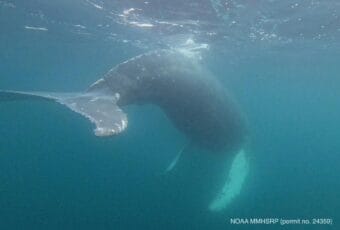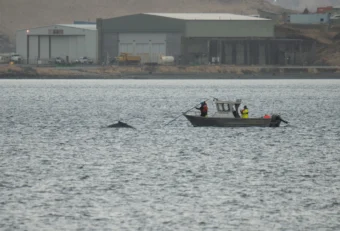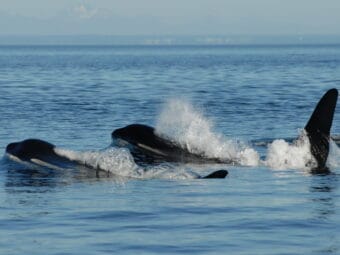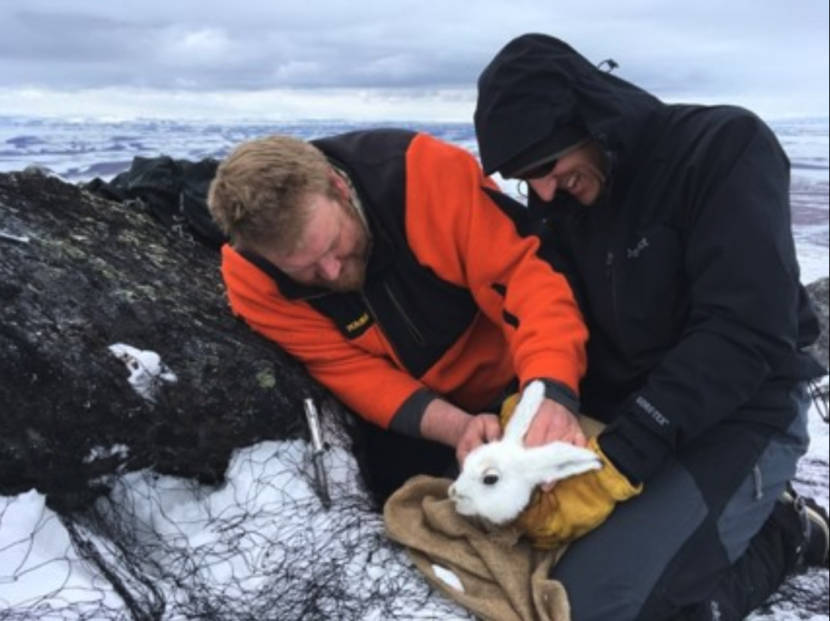
The Alaska Department of Fish and Game is studying western Alaska’s dwindling population of Alaska hares, more commonly known as jackrabbits. Researchers don’t yet know why the population has been decreasing, and they need more information about the species to find out.
In 2013, Fish and Game started planning their first official population surveys on Alaska jackrabbits. Wildlife biologist Chris Barger took the lead on this premier project. He shared his initial findings during a Strait Science presentation hosted by University of Alaska Fairbanks’ Northwest Campus in Nome earlier this month.
“This is an understudied species that we know very little about,” Barger stated. “And historical accounts from local residents, department staff, and field experiences from across western Alaska suggest that the Alaska hare population is substantially below these historical records. However, we have never had any surveys of the species and it’s never been done until this project began.”
Barger wants to know how many jackrabbits are left in western Alaska, what they eat and where they go. But in order to answer those questions, he had to count and catch some.
“For hares and rabbits there are many different approaches, and we tried and failed at many of them. One of those methods was to try and find them, and count them with spotlights. Another idea was to try aerial surveys with a helicopter. Also we tried just track surveys and pellet counts,” Barger listed.
For counting methods, Fish and Game had the most success by using DNA analysis on the rabbits’ fecal pellets to identify individual animals in the areas they surveyed. That involved following hundreds of miles of tracks with snowmachines and transects..
Barger and his team went to seven different locations within the jackrabbits range, spanning from Bristol Bay to just north of Kotzebue. They have so far identified fewer than 100 hares in the Nome area, fewer than 20 in Ekuk near Bristol Bay, and about ten in the Kotzebue area. Alaska hares are distinct from snowshoe hares mainly because of their size. Jackrabbits are two to three times bigger than the snowshoe, according to Barger.
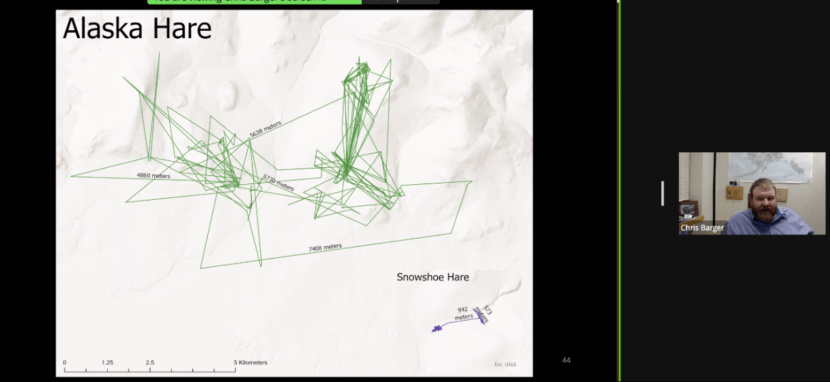
The research team then went from counting to trapping the rabbits.
With an almost Looney Tunes approach, Barger and his colleagues tried using bow nets with a pull string, night vision googles, camouflaged blinds and all sorts of different methods to capture the elusive jackrabbits.
But what was eventually successful was a modified pen trap with a transmitter attached to notify Barger when something was caught in the trap. He explains how the team used bait in the middle of the box trap, which is set up within a bigger pen trap and includes a trip wire made of monofilament fishing line.
“Now it starts to get a little complicated,” Barger said. “A string is attached to the doors, and that string is held up by a nail that’s wrapped with some wire. The nail is then connected by a string down to the bottom of a rat trap and then a thin monofilament fishing line goes from the trigger of the rat trap and runs all the way across the bait pile at the bottom of the net.”
That method led to the capture of about ten animals, who are now being tracked with satellite collars that will last for about a year.
Those jackrabbits were tagged so Fish and Game could find out more about the animals’ movements, Barger said.
“Using this preliminary data, we have found they can have a home range upwards of 5,000 acres and they can easily move three to four linear straight line miles in a matter of hours. So these things can really book it across the tundra when they want to,” Barger said.
In western Alaska, jackrabbits tend to spend most of their time in a core area of 430 acres within the larger home range. Barger tends to see jackrabbits living in willow thickets.
Since this is the department’s first official survey of jackrabbits, preliminary data is sparse. But the team will do their final field surveys this spring in Nome, according to Barger. Then they can analyze the diets of jackrabbits and maybe begin studying what is causing Alaska hares in western Alaska to decline.

